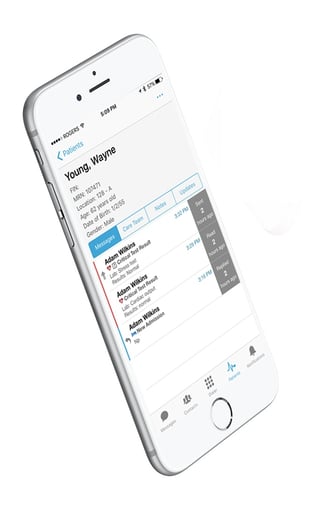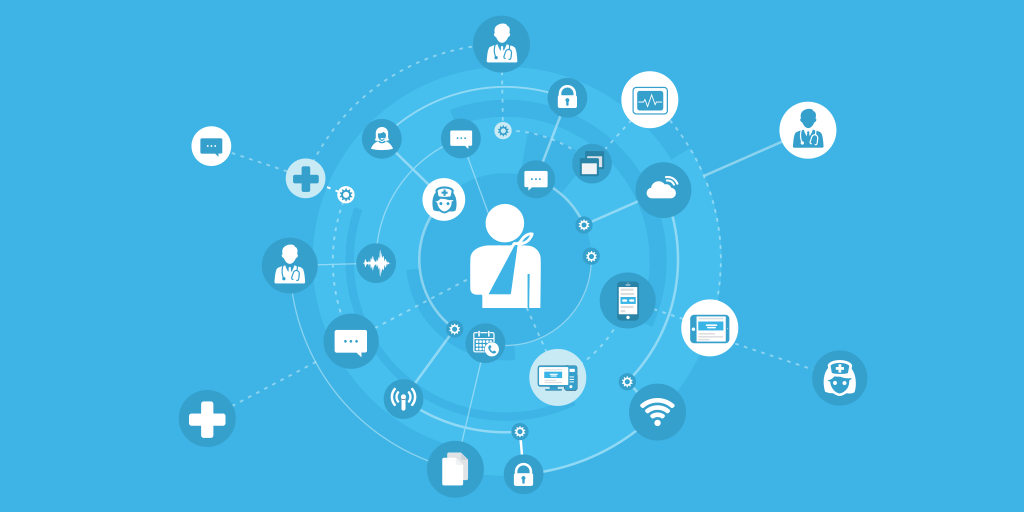‘Patient-centric’ approaches, despite approaching meaningless buzzword status in healthcare, have been proven to yield positive results. Traditionally, ‘patient centric’ is used to refer to the relationship between the patient, the physician, and the care team. However, there are numerous other opportunities to reinforce the patient centric methodology. One of those opportunities presents itself in communications solutions.
 If a physician, nurse, or administrator is communicating with a HIPAA-compliant messaging app, it almost certainly stands to reason that the communication relates to a patient. Yet in the majority of communications solutions, the workflow remains primarily focused on the provider, grouping conversations by individual, care team, or hospital group, with the patient being considered as an afterthought. It’s time for a change.
If a physician, nurse, or administrator is communicating with a HIPAA-compliant messaging app, it almost certainly stands to reason that the communication relates to a patient. Yet in the majority of communications solutions, the workflow remains primarily focused on the provider, grouping conversations by individual, care team, or hospital group, with the patient being considered as an afterthought. It’s time for a change.
In order for messaging applications to provide utility in a healthcare setting, it’s crucial that they offer three things: context, clarity, and convenience. It’s no coincidence that sentinel events are so frequently attributed to breakdowns in communication; in a fast-paced, interruption-rich environment such as a hospital, care teams have limited time and resources to collaborate, communicate, and deliver care. Here are three ways patient centric messaging can help in a hospital environment.
Care Transfers and Handoffs
Communication between care teams during the handoff process is critical for patient safety. In the study ‘Patient-Centered Perspectives of Hospital Communication and Handover’ from Healthcare Human Factors, they found that despite the prevalence of digitally available information (such as patient demographics, result history, order history, and notes), electronic records typically lacked physicians’ summaries, nurses’ summaries, and completion status of tests. Being able to communicate this information within a simple, intuitive messaging application and then quickly and easily transfer the historical chat record to the new care team can reduce the risk associated with communication breakdowns during the handoff process.
Nurse Call Replacement
What is patient-centric messaging without including patient touchpoints? By integrating nurse call into a mobile communications platform, nurse call incidences are pulled into the patient chat thread, automatically routed to the correct nurse or call-team, and archived in the EHR. The benefits of an integrated nurse call solution are plentiful; response times are reduced (Waiting time for a patient to contact the most responsible nurse reduced from 3.8 min to 6 s, according to a recent survey), patient satisfaction is increased, and nurse efficiency is boosted, yielding positive results across the continuum of care.
Critical Results
One workflow that creates a huge burden on clinicians today is the conveyance of critical test and lab results to a patient’s care team. Current workflow for checking patient lab results requires the physician or nurse to manually log into the EMR interface, which can take time in a fast-paced and predominantly mobile environment. Without patient centric messaging, there is no way to identify who should be receiving critical values, and when. More importantly, what should be done with these values once they are received? Even systems which automate the delivery of critical values often fall short because they provide physicians with the equivalent of alarm fatigue.
A recent survey showed that the average primary care physician receives over 77 critical events a day. A system which can not only identify the care team for a patient, but also allow rules to filter which values should be received (and when) can dramatically improve patient outcomes and reduce workload on providers. For example, a rule could be set to send all low potassium results to the nurse, where more specific physician-ordered test results could be routed directly to the physician.
Ultimately, as enterprise messaging solutions within healthcare keep pace with their mass-market counterparts (think: Slack), it will be imperative that solutions find a way to tailor their products to better serve the needs of the vertical they’re focused on. For healthcare, as has been proven, this means putting the patient at the center of the conversation and giving providers the context, automation, and information they need to perform their jobs.


